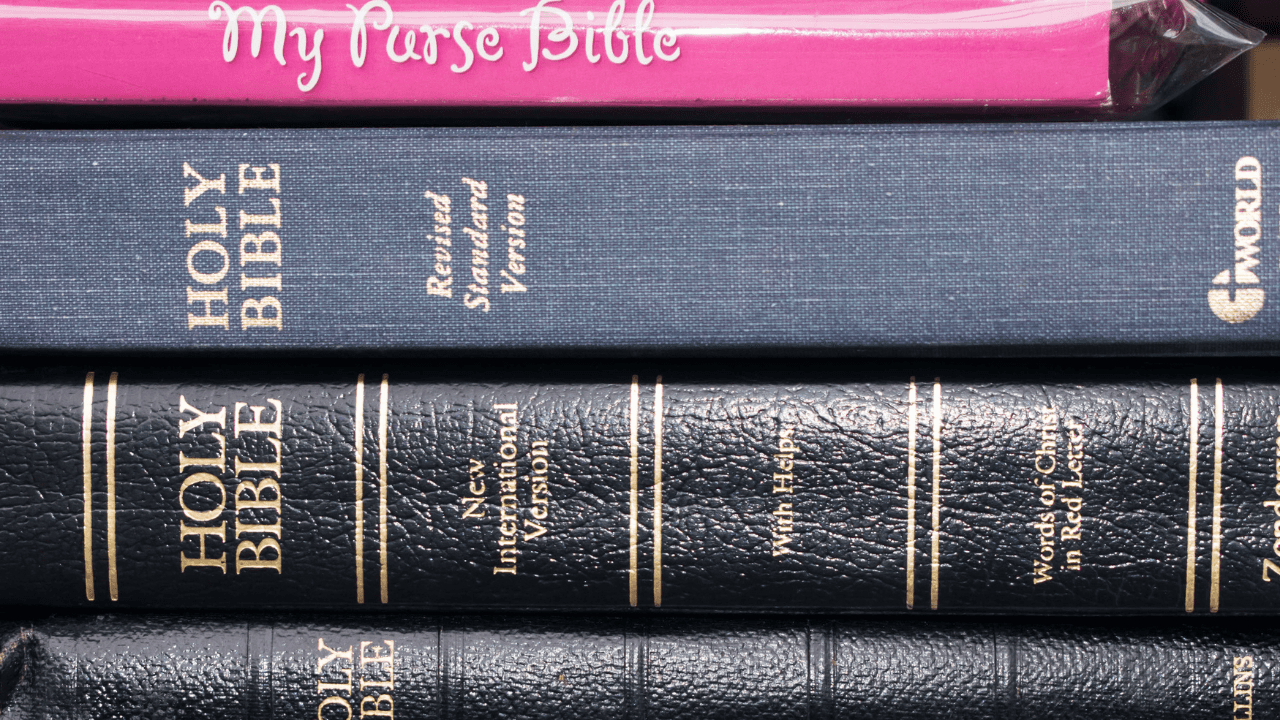Become part of the Pints With Aquinas community by supporting the show on Locals. Depending on the amount of your monthly gift, you’ll get access to some pretty awesome perks, from the “Morning Coffee” podcast to monthly spiritual direction videos from Fr. Gregory Pine!
What Bible Translation Should You Read?

Here are three translations of the Annunciation in Luke 1:28:
“And the angel being come in, said unto her: Hail, full of grace, the Lord is with thee: blessed art thou among women.” (Douay-Rheims 1899 American Edition)
“The angel came to her and said, ‘Peace be with you! The Lord is with you and has greatly blessed you!’” (Good News Translation)
“And coming in, the angel said to her: ‘Greetings, you highly favored one, Jehovah is with you.’” (New World Translation)
Translations matter. Luke 1:28 has often been seen by Catholics as evidence for Mary’s Immaculate Conception. Translation one offers some support (“full of grace”). The other two translations don’t support that belief as strongly.
Of course, no translation completely captures all of the nuances of the original languages. But some do better than others.
If you’re wondering how to choose a Bible translation, here are a few points to keep in mind.
Many people assume that newer means better. However, newer translations of the Bible aren’t always more accurate than the older ones.
The King James Version (Protestant) and Douay-Rheims Bible (Catholic) are hundreds of years old, poetic, and incredibly faithful to the original languages. Of course, you won’t get all of the books of the Bible with the King James, since Protestants reject seven Biblical books accepted by Catholics.
2. Beware of the word “new” in a translation title
The problem with the King James and Douay Rheims translations is that they use a lot of archaic words and expressions, making it easy to miss what the passage is actually saying.
Many newer translations of the Bible use contemporary language, but be careful here. Some are not as faithful to the original texts as older translations.
Theological nuances are often lost in an attempt to rewrite passages of Scripture to make them more “relevant” to modern-day readers. And the freer the translation, the easier it is for the translator to insert their biases. We see this with the Bible translation used by Jehovah’s Witnesses — the New World Bible — where the translators seemingly undermine passages showing Jesus’ divinity through questionable word choices.
Some new translations have also fallen victim to today’s political correctness. Flee any translation that doesn’t call God “He.” If a translator can’t respect God’s pronouns, they can’t be trusted to accurately translate the rest of His revelation in Scripture.
3. Find a balance between old and new
So, what’s a Catholic to do? You want a translation that’s faithful to the original languages, but still understandable.
One translation that strikes an impressive balance is the Revised Standard Version Catholic Edition (RSVCE). Note: This is not the New Revised Standard Version. The RSVCE is very faithful to the original text, yet easy to read. Sure, it doesn’t have the latest trendy language, but we find that refreshing!
We’re not saying the RSVCE is the only valid choice. If you enjoy the challenge of older English, then the Douay-Rheims may be for you. And you may find situations where a newer translation is needed for, say, explaining a passage to your youth group.
But the RSVCE is the one we recommend for Catholics who simply want to read and meditate on the Word of God without having to pull out an Old English dictionary or look up the latest slang on Urban Dictionary.
POPULAR POSTS

BROWSE OFFICIAL MERCH
FROM PINTS WITH AQUINAS
 Find this mug, apparel, books and more on the official Pints with Aquinas online store.
Find this mug, apparel, books and more on the official Pints with Aquinas online store.





